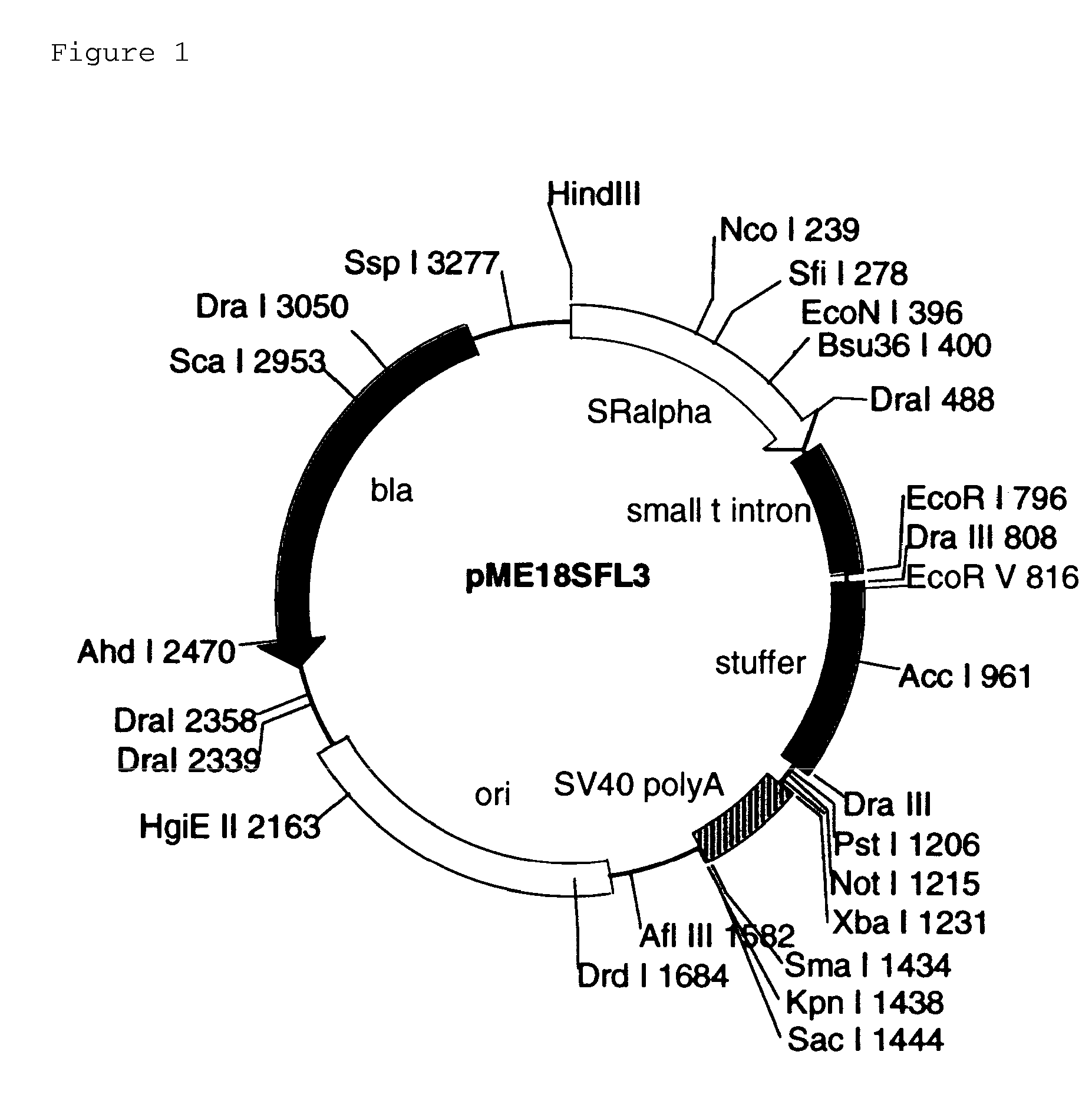FULL-LENGTH cDNA AND POLYPEPTIDES
a polypeptide and full-length technology, applied in the field of polypeptides encoding novel polypeptides, polypeptides, can solve the problems of difficult to predict the structure of encoded proteins solely based on genomic information, the determination of genomic sequences itself cannot identify the functions of all genes, and the information around the 5′-end of mrna is extremely small, so as to achieve high fullness ratio, high reliability of analysis, and high reliability of expression frequency analysis
- Summary
- Abstract
- Description
- Claims
- Application Information
AI Technical Summary
Benefits of technology
Problems solved by technology
Method used
Image
Examples
example 1
Preparation of cDNA Library by Oligo-Capping
(1) Extraction and Purchase of mRNA
[0277] Total RNAs as mRNA sources were extracted from human tissues (shown below) by the method as described in the reference (J. Sambrook, E. F. Fritsch & T. Maniatis, Molecular Cloning Second edition, Cold Spring harbor Laboratory Press, 1989). Further, by the method as described in the reference (J. Sambrook, E. F. Fritsch & T. Maniatis, Molecular Cloning Second edition, Cold Spring harbor Laboratory Press, 1989), total RNAs as mRNA sources were extracted from human culture cells and human primary culture cells (shown below) which had been cultivated by the methods described in the catalogs.
[0278] The library names and the origins are indicated below in the order of “Library name: Origin”. When a library was prepared by the subtraction method, the item is followed by a description of how to prepare the subtracted library.
NTONG: Normal tongue;
CTONG: Tongue cancer;
FCBBF: Fetal brain;
OCBBF: Fe...
example 2
Sequencing Analysis of cDNA Ends and Selection of Full-Length Clones
[0289] With respect to the plasmid DNAs of clones obtained from each cDNA library, the 5′-end nucleotide sequences of the cDNAs were determined in a DNA sequencer (ABI PRISM 3700, PE Biosystems), after sequencing reaction was conducted by using a DNA sequencing reagent (Dye Terminator Cycle Sequencing FS Ready Reaction Kit, dRhodamine Terminator Cycle Sequencing FS Ready Reaction Kit or BigDye Terminator Cycle Sequencing FS Ready Reaction Kit, PE Biosystems) according to the manual. A database was constructed using the data obtained.
[0290] For the analyzed 5′-end sequences of cDNA clones, the data with the annotation of “complete cds” in the GenBank and UniGene were searched by BLAST homology search. When identical to certain human mRNA sequences, such cDNA clones were excluded. Then, clustering was carried out. When the identity was 90% or higher, and the length of consensus sequence was 50 base pairs or longer, ...
example 3
Analysis of the Full-Length Nucleotide Sequences
[0291] The full-length nucleotide sequences of the selected clones were determined. The nucleotide sequence determination was mainly performed by primer walking method comprising the dideoxy terminator method using custom-made synthetic DNA primers. Namely, the nucleotide sequences of the DNAs were determined in a sequencer from PE Biosystems, after sequencing reaction was carried out with a DNA sequencing reagent from the same supplier using the custom-made synthetic DNA primers according to the manual. A part of the clones were analyzed with a DNA sequencer from Licor.
[0292] Further, the nucleotide sequences of a part of the clones were determined by the shotgun method where the plasmids containing the cDNAs were digested at random were used, instead of the use of custom-made primers, by the same method in the DNA sequencer. The full-length nucleotide sequences were finally determined by completely assembling the partial nucleotide...
PUM
 Login to View More
Login to View More Abstract
Description
Claims
Application Information
 Login to View More
Login to View More - R&D
- Intellectual Property
- Life Sciences
- Materials
- Tech Scout
- Unparalleled Data Quality
- Higher Quality Content
- 60% Fewer Hallucinations
Browse by: Latest US Patents, China's latest patents, Technical Efficacy Thesaurus, Application Domain, Technology Topic, Popular Technical Reports.
© 2025 PatSnap. All rights reserved.Legal|Privacy policy|Modern Slavery Act Transparency Statement|Sitemap|About US| Contact US: help@patsnap.com


